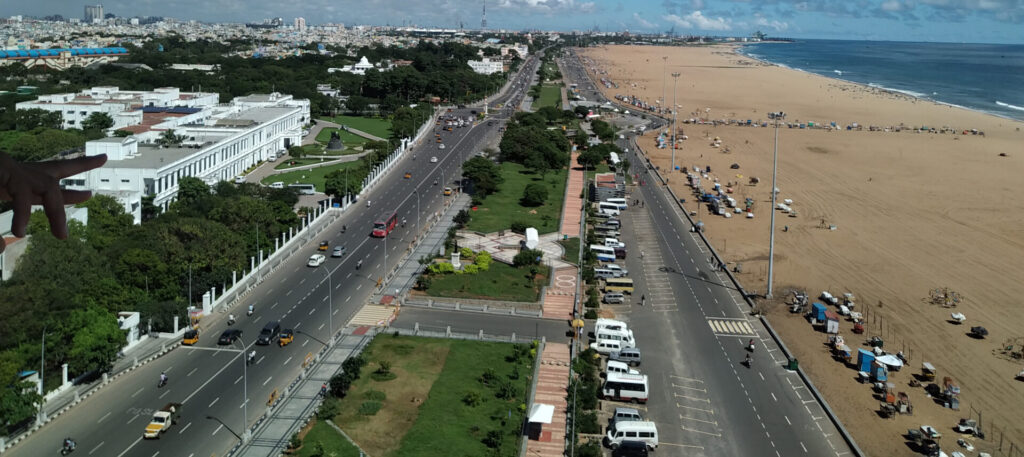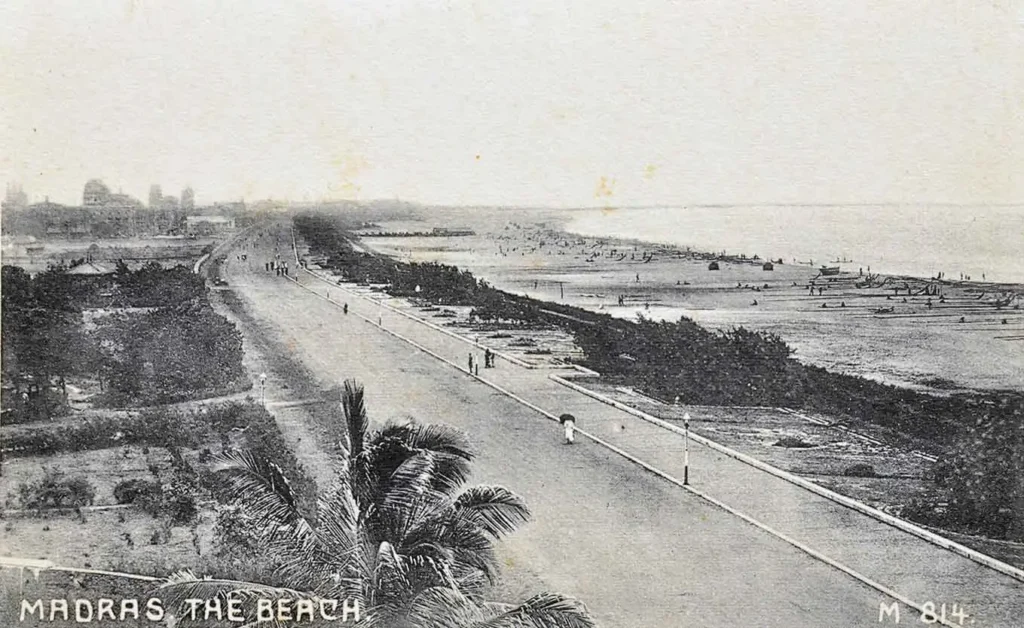
A 4km stretch from Santhome Church to Napier Bridge along the Marina will soon be developed into a bustling hub of culture and activity in a phased manner. It will include illuminated heritage structures and a seamless, inclusive, pedestrian-friendly environment.
Chennai Metropolitan Development Authority (CMDA) has taken up the `10 crore project to transform the Kamarajar Salai promenade which is more associated with the famous sands of the Marina than with the heritage buildings that dot it on the west.
Urban development experts say this project will not only open up public spaces but also aid in the upkeep and preservation of heritage structures including the University of Madras, Santhome Church, the Public Works Department (PWD) office building, Vivekanandar Illam (Ice House) and Presidency College.
Despite its allure, the area faces numerous issues, such as a lack of public space, inadequate seating areas, narrow pedestrian pathways that are not disabled-friendly, and a lack of signage about the history of the buildings and statues that dot it.
CMDA has developed a road map to address these issues, beginning with the illumination of heritage structures.

Urban planners point out that the true potential of the promenade lies on the western side, with all present developments in the area prioritizing the beachfront, neglecting the architectural sculptures on the landward side, creating a disconnect between the coastline’s beauty and the cultural richness of the inland area.
“This project will help rediscover the vibrant history of Chennai. We will not only preserve our rich heritage but also create a more exciting experience for tourists,” said P K Sekar Babu, minister in charge of CMDA.
In the first phase, CMDA plans to create glow gardens, a fountain plaza, a sculpture garden, and gathering zones. There will also be signages for easy wayfinding, information panels, heritage walks and tours, and seating areas.
The stretch has been divided into seven zones to identify and address accessibility issues. The pavement width is now uneven and often occupied by vehicles, making pedestrian crossings unsafe.
These issues will be addressed to ensure seamless movement and improved pedestrian access. Additionally, efforts will be made to encourage non-motorized transport.

